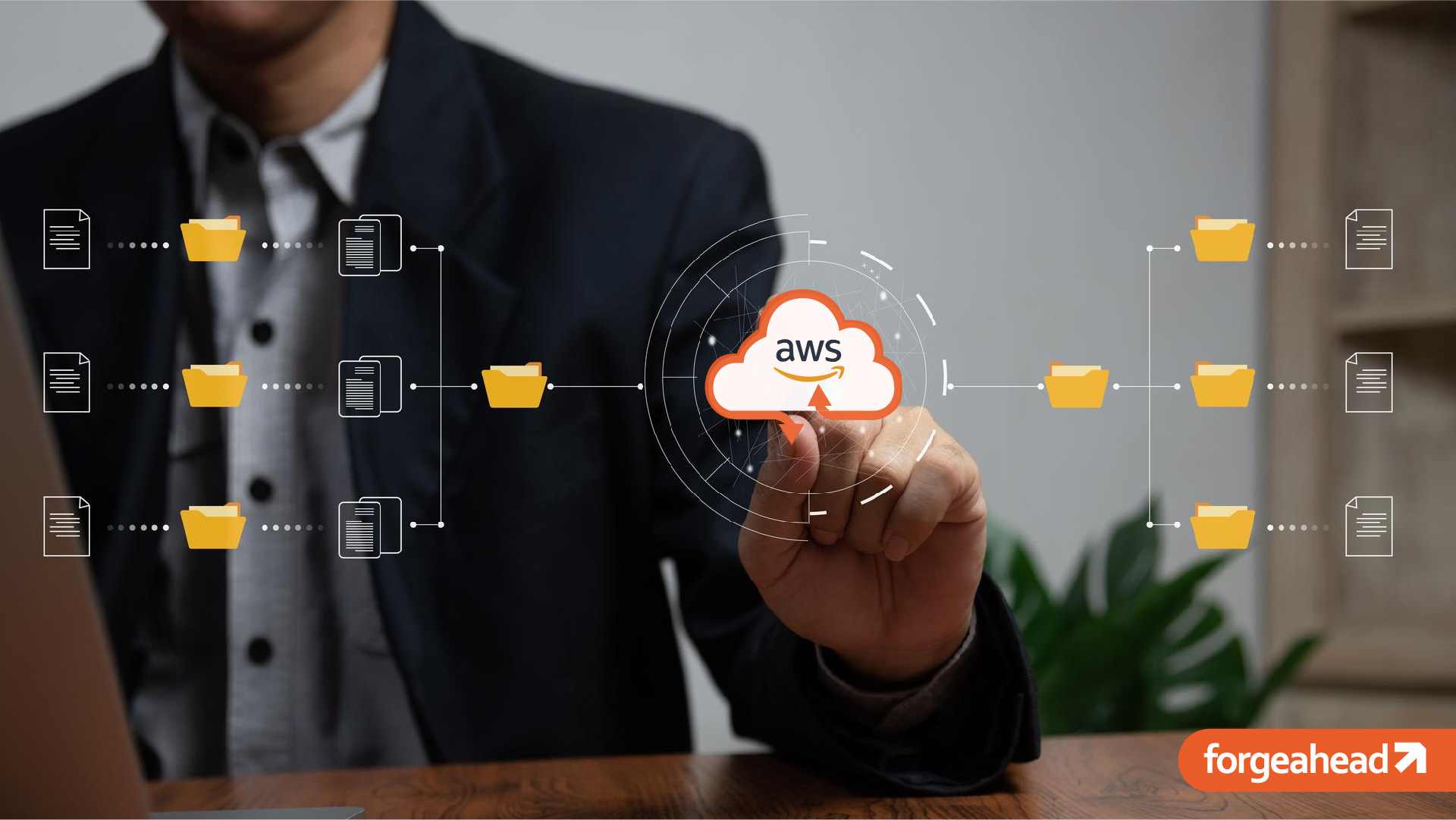In the rapidly evolving landscape of software development, AWS Serverless solutions have emerged as a game-changer, offering unprecedented scalability and efficiency. Understanding the cost-benefit analysis of these solutions is crucial. It’s not just about adopting the latest technology; it’s about making informed decisions that align with budget constraints and project goals.
This blog talks about the intricate balance of costs and benefits associated with AWS Serverless. We’ll explore its cost efficiency, performance capabilities, operational advantages, and long-term benefits. Designed to provide a clear, data-driven perspective, this analysis aims to guide leaders in technology sectors through the complexities of serverless architecture, aiding in strategic decision-making that could redefine the future of software development.
Understanding AWS Serverless Solutions
Defining AWS Serverless Solutions
AWS Serverless solutions offer a modern approach to cloud computing, where the service provider, like AWS, handles the server management. This setup allows developers to concentrate solely on their code. The key benefit here is the elimination of the need to manage servers, paving the way for applications to scale effortlessly and more efficiently.
The Evolution of Serverless Computing
The journey of serverless computing is a testament to the evolution of cloud technology. Originally, cloud computing required renting virtual space or hardware, often leading to scalability and resource management challenges. The advent of serverless computing brought a significant shift.
AWS, a leader in cloud services, introduced AWS Lambda in 2014, fundamentally changing the game by enabling scalable serverless computing. This evolution meant developers could now deploy applications without the overhead of managing servers, focusing more on innovation and less on infrastructure.
Comparing AWS Serverless to Traditional Cloud Services
Advantages of AWS Serverless: A Game-Changer in Cloud Computing
Imagine stepping into a world where cloud computing is not just about powerful technology, but also about smart economics. This is where AWS Serverless shines, rewriting the rules of the game.
Picture a scenario where you’re not tied down by the rigid costs of reserved server capacity, often paying for what you don’t use. AWS Serverless turns this scenario on its head with its pay-as-you-go model. It’s like only paying for the electricity you use, rather than a flat rate. This savvy approach aligns costs directly with your usage, leading to significant savings, especially for businesses with fluctuating demands.
But the magic of AWS Serverless doesn’t stop there. It’s like having a car that automatically adjusts its engine power based on the road conditions, without any effort from you. In the digital world, this translates to applications that effortlessly scale up or down based on traffic, without any manual tweaking. This feature is a boon for applications that experience unpredictable traffic, ensuring seamless performance without the extra cost.
Lastly, AWS Serverless brings a breath of fresh air to operational management. Imagine handing over the tedious tasks of server maintenance and security updates to a trusted partner. AWS steps into this role, freeing developers from the chains of backend worries. This liberation opens up a world of possibilities, allowing for quicker deployment and more room for innovation. It’s like having a skilled co-pilot, so you can focus on navigating your business to new heights.
In essence, AWS Serverless stands out by offering a more cost-efficient, scalable, and maintenance-free alternative to traditional cloud computing models. Its unique benefits cater to the needs of modern software development, emphasising agility and operational efficiency.
Cost Analysis of AWS Serverless in Software Development
Breaking Down the Costs of AWS Serverless
AWS Serverless solutions, such as AWS Lambda, offer a unique pricing model that significantly differs from traditional server-based approaches. The primary cost components include the number of requests – each time the service responds to an event, and the duration – the time it takes for the code to execute, measured in 100ms increments. Additionally, AWS charges based on the amount of memory allocated to the function. This model allows for precise cost control, as businesses only pay for the exact resources their applications consume. The absence of costs associated with idle server time marks a fundamental shift from traditional cloud computing expenses.
Comparing with Traditional Cloud Computing Models
In traditional cloud computing, costs are predominantly driven by server provisioning, where businesses pay for server capacity, regardless of utilisation. This often leads to over-provisioning for peak times, resulting in higher costs during off-peak periods. In contrast, AWS Serverless’s pay-per-use model offers a more cost-effective solution, especially for applications with variable traffic. This model eliminates the need for forecasting traffic and allows for automatic scaling, directly aligning costs with actual usage. This can result in substantial savings for businesses, particularly those with fluctuating or unpredictable workloads.
Real-World Cost Efficiency Examples
A practical example of AWS Serverless’s cost efficiency can be seen in the case of a video-on-demand platform. By leveraging AWS serverless architecture, such as AWS Lambda and Amazon S3, the platform was able to efficiently handle increases in user traffic and video uploads. The serverless setup allowed for the dynamic allocation of resources, ensuring that the platform could scale during high-demand periods without incurring the costs of maintaining additional server capacity. The result was a significant reduction in operational costs, especially in terms of resources required for maintaining and scaling the server infrastructure. This example illustrates how AWS Serverless not only enhances operational efficiency but also offers tangible cost benefits, making it an attractive option for modern software development needs.
The cost components of AWS Serverless, when compared to traditional cloud computing models, present a compelling case for its adoption. Real-world examples further underscore its effectiveness in providing a scalable, cost-efficient solution for a wide range of applications, aligning with the dynamic needs of today’s businesses.
Performance and Scalability Advantages of AWS Serverless
Analysing the Performance Benefits
AWS Serverless solutions, such as AWS Lambda, offer significant performance benefits over traditional cloud services. One of the key advantages is the automatic management of the computing resources. This ensures that the serverless functions are always ready to respond to requests without any latency that might be introduced by server startup times. The stateless nature of serverless functions also contributes to their high performance, as each request is handled independently, providing consistent response times regardless of the load. This results in a more reliable and stable performance, especially for applications with varying workloads.
Scalability Features and Their Impact
The scalability features of AWS Serverless are a critical aspect of its appeal. AWS Lambda, for instance, can automatically scale horizontally, meaning it can handle an increasing number of requests by running more function instances. This scalability is not just about handling more requests; it also ensures efficient resource utilisation, as the scaling is in response to actual demand, not predetermined thresholds. This feature is particularly beneficial for applications with unpredictable or cyclical usage patterns, as it allows them to scale up during high traffic and scale down during quieter periods, ensuring cost-efficiency and performance optimization.
Real-World Case Studies Highlighting Benefits
A real-world example of these benefits can be seen in the case of a media company that implemented AWS Serverless for its content delivery platform. The company faced challenges with its traditional cloud setup, particularly during peak traffic times when server loads would spike, leading to increased latency and potential downtime. By migrating to AWS Serverless, they were able to scale their infrastructure dynamically, based on the real-time demand. This not only improved the user experience by reducing latency but also optimised their operational costs, as they no longer needed to maintain excess server capacity.
Another case study involves a retail e-commerce website that adopted AWS Serverless to manage its order processing system. The serverless architecture enabled the system to efficiently handle fluctuations in order volume, especially during seasonal sales periods. This scalability ensured that the website remained responsive and reliable during times of high demand, improving customer satisfaction and leading to increased sales.
The performance and scalability advantages of AWS Serverless solutions like AWS Lambda are clear and demonstrable. These benefits are not just theoretical but have been proven in various real-world applications, showing significant improvements in efficiency, reliability, and cost-effectiveness.
Operational and Risk Management Benefits of AWS Serverless

Operational Benefits: Streamlining Infrastructure Management
One of the standout operational benefits of AWS Serverless solutions is the significant reduction in infrastructure management. This paradigm shift allows organisations to focus on developing and improving their applications rather than worrying about the underlying infrastructure. With serverless architectures like AWS Lambda, the burden of server maintenance, including security patches, scaling, and provisioning, is transferred to AWS. This means less time and resources are spent on operational tasks, leading to increased efficiency and faster deployment cycles. Additionally, the serverless model offers improved reliability and uptime, as AWS manages the high availability and fault tolerance of the serverless infrastructure, ensuring that applications are always up and running.
Risk Management: Enhancing Security and Reducing Vulnerabilities
AWS Serverless solutions also contribute significantly to risk management in software development. By offloading the responsibility of server management to AWS, the surface area for security vulnerabilities is reduced. AWS takes care of securing the underlying infrastructure, providing regular updates, and managing security patches, which mitigates the risk of server-level vulnerabilities. Furthermore, serverless architectures inherently promote better coding practices, as developers are encouraged to write smaller, more modular functions. This not only makes the code easier to manage and test but also reduces the complexity that often leads to security flaws.
Additionally, AWS Serverless includes built-in features for risk mitigation, such as identity and access management, encryption, and logging and monitoring services. These tools enable organisations to have greater visibility and control over their applications, further enhancing security and compliance. In summary, AWS Serverless not only simplifies operational processes but also plays a crucial role in managing and mitigating risks, making it a secure and reliable choice for modern software development.
Assessing Long-Term Advantages of AWS Serverless
Long-Term Sustainability and Benefits
The long-term sustainability and benefits of AWS Serverless are significant, particularly when considering the evolving needs of modern software development. One of the primary long-term advantages is the model’s inherent scalability and flexibility, which future-proofs applications against changing demands and user growth. As businesses expand, AWS Serverless solutions automatically adjust, ensuring that applications remain robust and responsive without the need for extensive redevelopment or infrastructure overhaul. Moreover, the cost-efficiency of the pay-as-you-go pricing model translates into sustained financial savings over time, as organisations pay only for the resources they use without the overhead of maintaining idle server capacity.
Future Outlook and Evolving Trends in Serverless Architecture
Looking to the future, serverless architecture, especially AWS Serverless, is poised to become even more integral to software development. The ongoing evolution of cloud computing is likely to bring enhancements in serverless technologies, including improved performance, greater integration capabilities, and more sophisticated security measures. Anticipated trends include the growth of serverless in edge computing, where serverless functions could run closer to end-users for even faster response times and reduced latency. Another trend is the increasing use of serverless in conjunction with technologies like artificial intelligence and machine learning, where the ability to process large volumes of data efficiently and cost-effectively is crucial.
Additionally, as more organisations adopt a DevOps culture, the agility and rapid deployment capabilities provided by AWS Serverless align perfectly with the needs for continuous integration and continuous deployment (CI/CD) processes. This synergy will likely drive further adoption and innovation in serverless technologies. In conclusion, the long-term outlook for AWS Serverless is not only promising but also indicative of its potential to revolutionise how businesses approach software development, offering sustainable, scalable, and cost-effective solutions.
Wrapping Up: The AWS Serverless Revolution in Software Development
Throughout this blog, we’ve delved into the multifaceted benefits of AWS Serverless solutions in software development. From the cost-saving pay-as-you-go model to the operational efficiencies of reduced infrastructure management, AWS Serverless stands out as a robust, scalable solution. Its performance and scalability advantages, coupled with enhanced risk management, position it as a forward-thinking choice for modern software needs.
Key Benefits of AWS Serverless
AWS serverless computing offers a number of key benefits that make it an attractive choice for developers and businesses looking to streamline operations and reduce costs. Here are the main advantages:

Streamlined Operations:
Reduces management tasks, allowing teams to focus on development and innovation.
High Flexibility:
Easily adapt and evolve services without infrastructure constraints.
Cost Efficiency:
Only pay for resources when they’re actively used, minimizing waste.
Automatic Scaling:
Scales instantly based on demand without manual intervention.
Improved Risk Management:
Built-in redundancy and failover capabilities enhance application reliability and availability.
Looking ahead, the long-term sustainability and evolving trends in serverless architecture underscore its potential to continuously adapt and thrive in the dynamic world of software development. AWS Serverless is more than just a technology; it’s a strategic enabler, optimising the way businesses develop and deploy applications in an ever-changing digital landscape.
Elevate Your Software Development with AWS Serverless
Interested in harnessing the power of AWS Serverless for your software projects? Discover how it can transform your development processes and drive efficiency.
For more insights or personalised consultation, feel free to reach out to ForgeAhead and take the first step towards a more agile, cost-effective, and scalable future in software development.




